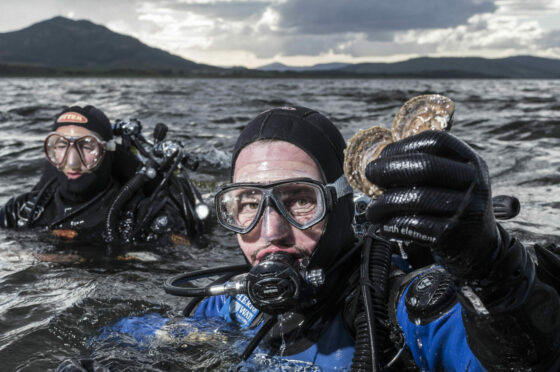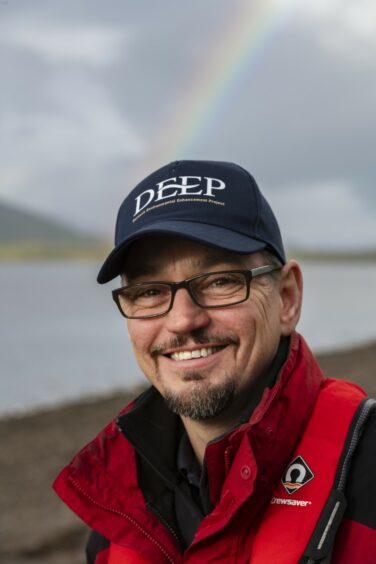
The chilly water of the Dornoch Firth in the Highlands was once home to millions of oysters, but historical over-fishing meant the species has been extinct in the area for the past 100 years.
Now, an innovative project, launched to improve the biodiversity and quality of the coastline, has successfully reintroduced more than 20,000 of the molluscs back to the seabed in just four years – and scientists leading the research believe their work could be an important tool in the fight against climate change.
Bill Sanderson is professor of marine biodiversity at Heriot-Watt University and leads The Dornoch Environmental Enhancement Project (Deep), which he explains was devised after looking at historical records for the area.
The Dornoch Firth has a reputation for being one of the least industrialised inlets in Scotland, as it is not only a Special Protection Area and Special Area of Conservation, but also a Site of Special Scientific Interest.
“When we started looking at whether there might be scope for improving the Dornoch, it was a bit like taking the crown jewels and saying, ‘Well, could we do better?’,” explained Professor Sanderson.
“We started investigating the environmental history of the site. There used to be very extensive oyster beds in the area, with one extending from the Dutch and German Wadden Sea to the Dogger Bank in the middle of North Sea. That’s nearly 200 miles long.
“There are also records from the 1880s 1890s that show oysters were being extracted from the Firth of Forth at a rate of about 30 million a year – which is why really they became locally extinct.”
He added: “We put 300 test oysters in the water in 2017, and they grew well for two years with very high survival rates. Then we started to rebuild the habitat.
“The next year, in 2018, we started rebuilding reefs and putting oysters in the water so we could look at how they grew and survived. Now, we’ve put 20,000 oysters into the Dornoch Firth, and ramped up to the point where we can go operational – expanding to scale and building the habitat in a big way.”
Deep was launched in partnership with Glenmorangie Distillery as part of the company’s water quality enhancement strategy, initially addressing the organic waste discharge from the distillery, located on the banks of the Dornoch River. Although an anaerobic digestion plant successfully reduced the distillery’s biological output by over 95%, “planting” an oyster reef is expected to soak up the remaining 5%, with just one oyster able to purify up to 200 litres of water a day.
Sanderson and his team are also investigating whether the restored oyster habitat – which they hope to grow to four million oysters – will have the capacity to act as a long-term carbon store. He said: “We’ve started to get really interested in whether, in the process of building this habitat, we are also building a carbon store. We are still uncovering exactly how much of a game changer this can be.”
He now hopes similar projects will be inspired by their work. “Eight years ago, there was three or four people thinking about oyster reintroduction in Europe,” he said. “Now there’s more than 20 projects that have started across the Atlantic Europe, and 15 different countries have restoration projects for oysters ongoing. It’s really picking up the pace.
Sanderson added: “When we go out into the water and see how much our oysters have grown, you do get a bit of a proud dad moment. It’s rewarding work.”

Enjoy the convenience of having The Sunday Post delivered as a digital ePaper straight to your smartphone, tablet or computer.
Subscribe for only £5.49 a month and enjoy all the benefits of the printed paper as a digital replica.
Subscribe





